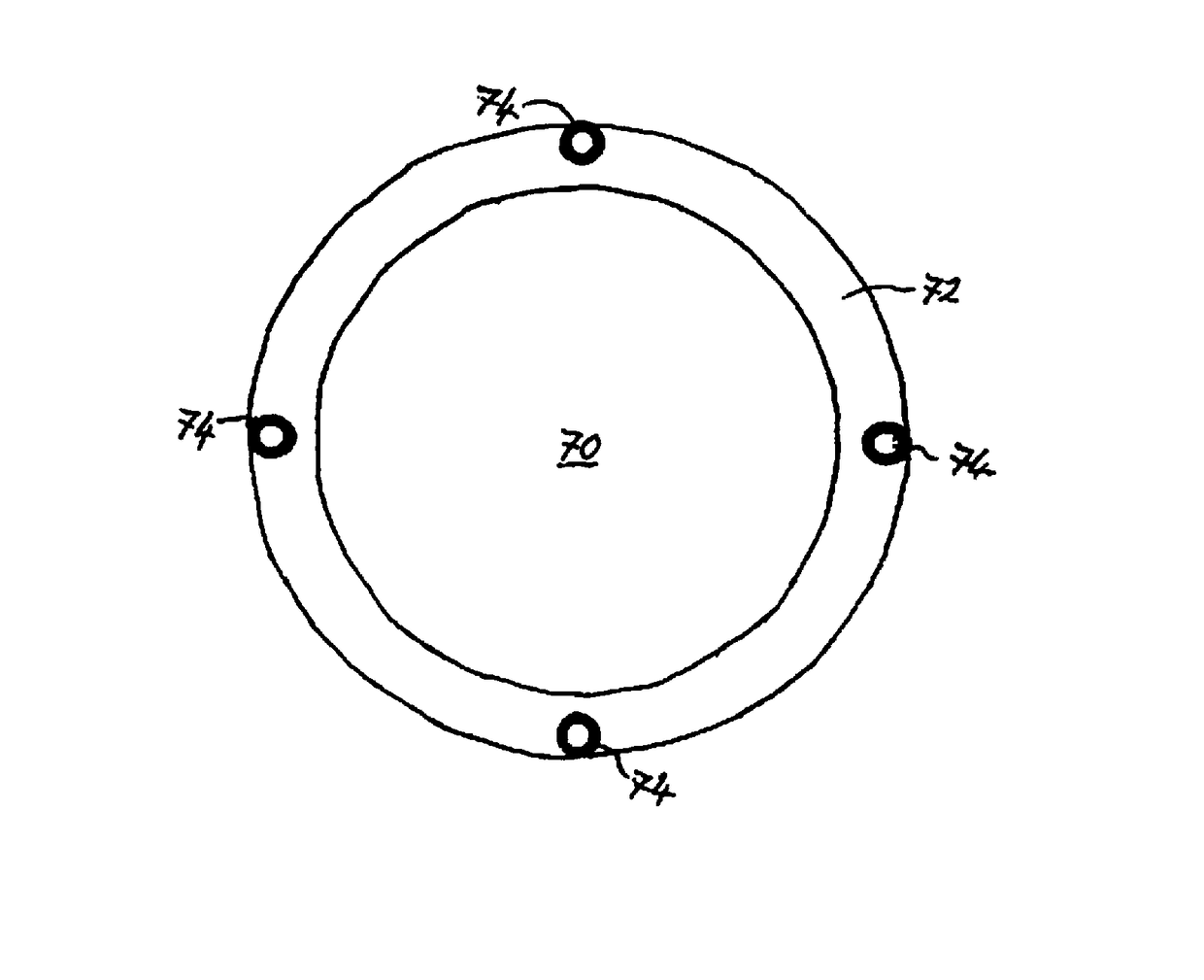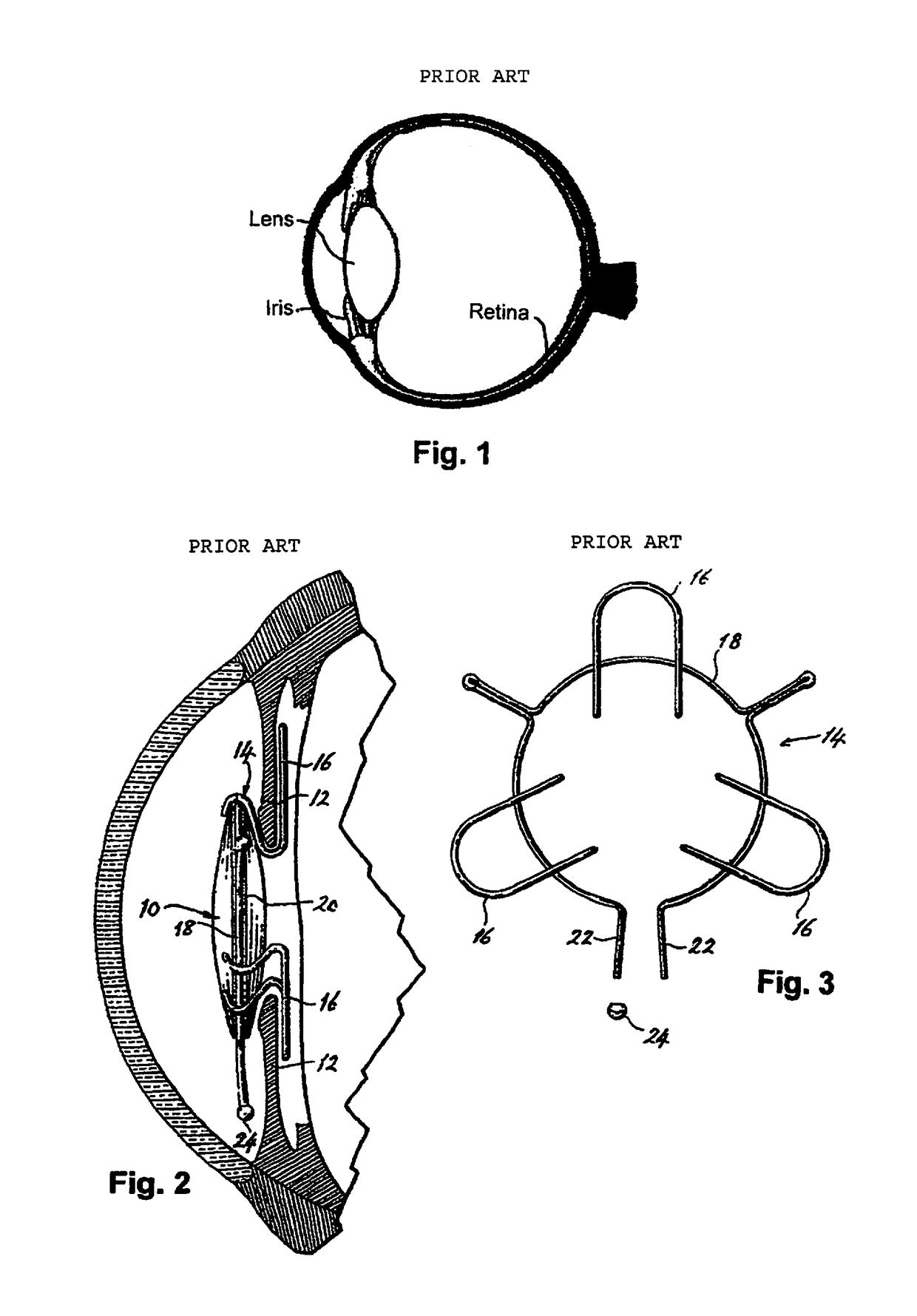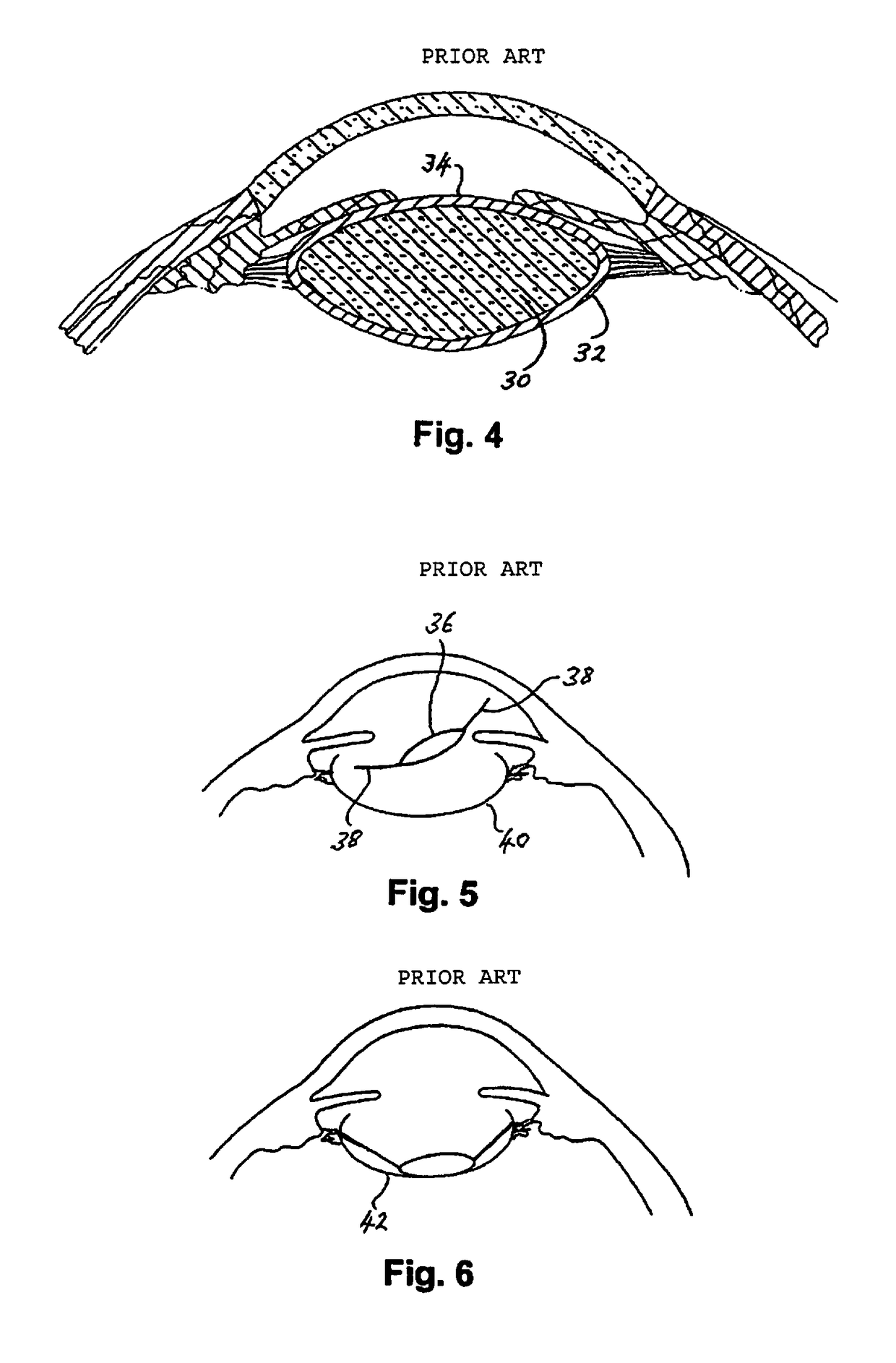Intraocular implant and method for fixing same into an eye
a technology of intraocular implants and eye implants, which is applied in the field of intraocular implants, can solve the problems of difficult to ensure that the lens has the desired placement, difficulty in accurately defining the location of the eye lens in the z-direction, and difficulty in accurately defining the placement of the eye lens, so as to achieve the effect of easy and more secure implant attachment and greater stability of implant attachmen
- Summary
- Abstract
- Description
- Claims
- Application Information
AI Technical Summary
Benefits of technology
Problems solved by technology
Method used
Image
Examples
second embodiment
the implant in accordance with the invention is illustrated in FIGS. 10 and 11.
[0036]Here the implant has no haptics, but consists of the optic 70 plus a peripheral section 72, which is a simple extension of the edge of the optic 70. The radial width of the extension will be at least sufficient to accommodate the lugs and to ensure that the voids made in the capsule are reasonably remote from the lip of the capsulotomy. Four lugs 74 protrude from, and are of one piece with, the peripheral section, being substantially equidistantly spaced around the peripheral section. The lugs 74 are configured as in the first embodiment (see FIG. 9).
[0037]This implant is smaller than that of the first embodiment, since no haptics are present. This means that the incision to be made in the eye, in order to introduce the implant into the eye, can be made smaller, with a smaller wound and leading to a faster recovery of the patient and less induced astigmatism.
[0038]When the implant is located adjacen...
PUM
 Login to View More
Login to View More Abstract
Description
Claims
Application Information
 Login to View More
Login to View More - R&D
- Intellectual Property
- Life Sciences
- Materials
- Tech Scout
- Unparalleled Data Quality
- Higher Quality Content
- 60% Fewer Hallucinations
Browse by: Latest US Patents, China's latest patents, Technical Efficacy Thesaurus, Application Domain, Technology Topic, Popular Technical Reports.
© 2025 PatSnap. All rights reserved.Legal|Privacy policy|Modern Slavery Act Transparency Statement|Sitemap|About US| Contact US: help@patsnap.com



